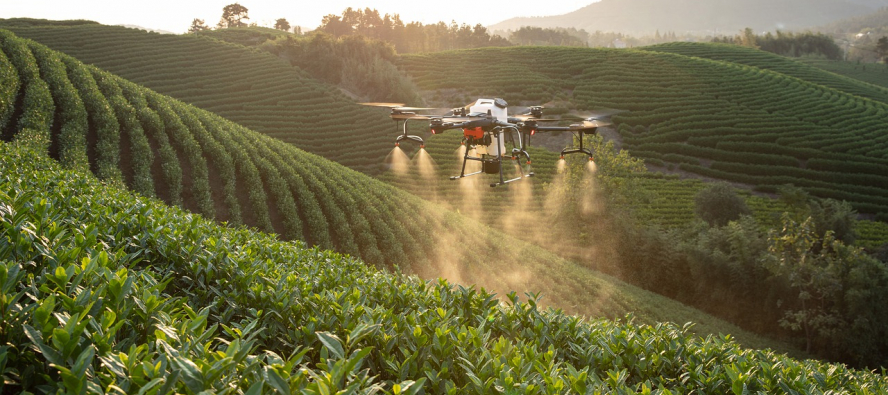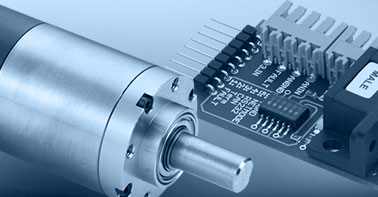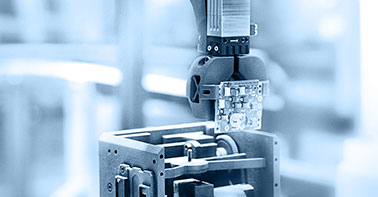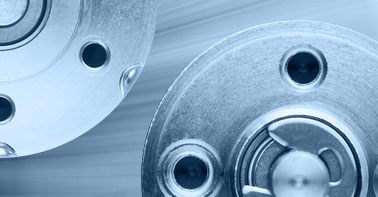- info@ems-ltd.com
- 0118 9817391
Home > PR > Drive systems for Agriculture
Drive systems for Agriculture
14/02/2022 - AgriTech provides a more precise approach to pest management
14th February 2022
Filed under:
Agritech, Drones, Robots

According to a meta-analysis of 90 studies led by Dr Harry Siviter, the agricultural pesticides currently used by farmers can kill twice as many bees as initially thought. The chemicals in pesticides place bees under psychological and nutritional stress, posing a risk to their already depleting populations. Here Dave Walsha, sales manager at precision drive system supplier, EMS, explores how advances in agricultural technology with the help of micromotors can help reduce the environmental impact of farming.
The impact of agriculture on the environment is vast — pesticides and fertilisers pollute fresh water, marine ecosystems, air and soil. Additionally, the agricultural sector currently consumes around 69 per cent of the planet’s fresh water, impacting freshwater systems around the world.
As the global population increases, pressure is mounting on our food systems to feed the predicted 10 billion people that will inhabit Earth by 2050. Intensifying agriculture using current farming methods will only amplify the harmful effects it has on the environment. Advances in agricultural technology may provide alternative farming methods that are less damaging and more productive.
Drones
Using sensory imaging technology and thermal cameras, drones can be flown over farmlands to collect data and produce 3D images. This data can be analysed and interpreted to provide farmers with insights and recommendations regarding harvests or threats to crop health.
Traditionally, farmers spray pesticides across the whole field as a preventative measure. However, having greater insight into a field’s entire health means crops can be treated only if they need to be. Farmers can use fewer pesticides, preserving resources, reducing costs and limiting danger to wildlife. An aerial image of farmland can also reveal issues that may otherwise have gone unnoticed, such as poor irrigation, soil variation and pest problems.
Robots
In addition to using drones, robotics could provide even greater precision to pesticide application. Using sensors and vision systems to identify weeds and spray them directly with pesticides, miniature “robot farmers” could reduce overall pesticide use even further.
To operate efficiently, the robots must collect a variety of information, including the condition of individual crops and the location of weeks. AI platforms can then be used to analyse this data to create a farm management plan for the farmer.
Companies are starting to explore the potential of using non-chemical robot weeding systems. These robots would deliver electricity directly to harmful weeds, causing extensive damage to all parts of the plant and killing it within minutes.
A more targeted weeding system could be beneficial to farmers as not all weeds are harmful. Nettles, for example, attract bees and make neighbouring plants more resistant to insects, so are frequently grown alongside crops such as broccoli and tomato. While most pesticides will indiscriminately kill all weeds, electricity can target the damaging weeds while leaving those that may benefit the crop.
Powering AgriTech
Conditions for agricultural equipment can be tough, so automated agricultural technology like Dick the robot must be powered by motors that can perform well in the field. Kählig Antriebstechnik GmbH (KAG) drives for agricultural technology are specifically designed for the rough areas of agriculture. These motors, supplied in the UK by EMS, have a high degree of ingress protection so can be used outdoors and cleaned with high water pressure without damage, preventing any unnecessary downtime.
As well as being robust, agricultural robots must be agile to manoeuvre around rows of crops and interact with plants. KAG drives demonstrate good controllability with customised incremental encoders, enabling precise control of the process.
A recent global study found that the number of wild bee species around the world has declined by 25 per cent since 1990. To protect the remaining species, it is important that we act now. Recent advances in automated technology are allowing more precise, targeted farming, which not only protects the environment, but also produces higher yields, helping to feed the growing population.
To find out more about KAG motors available through EMS, call us on 0118 9817391 or get in touch with us via our contact form here.
- Categories / Tags
- 1024...SR
- AEMT
- AESL
- Acceleration
- Agriculture
- Agritech
- Autoclave
- BHS
- BHT
- BHx
- BLDC
- BP4
- BRC Series
- BX4
- BXT
- BeBionic
- Bespoke
- Brushed
- Brushless
- Brushless Motor
- Buhler
- Building Automation
- COVID
- CXR
- Catalogue
- Controller
- Coreless
- Coventry
- Custom
- Custom Design
- DC Motor
- DMN
- Dc Motor
- Design
- Dimatech
- Drones
- EDS
- EMS
- EMS News
- EV
- Encoder
- Ewellix
- Exoskeleton
- Expo
- FAULHABER
- Factory
- Faulhaber
- Flat
- GPT
- Galil
- Gearhead
- IEF3
- IMC
- Industry 4.0. Blog
- Inspection
- KAG
- LL06
- LM
- Laboratory Automation
- Linear
- Linear Actuator
- M50
- M80
- MC3
- Manufacturing
- Mechatronics
- MedTech
- Medical
- Medical Devices
- Medical Imaging
- Medtech
- Merkel
- Motion Control
- Motor
- New
- Nidec
- Nidec Servo
- Optical
- Piezo
- Piezomotor
- Pipeline
- Planetary
- Point Of Care
- Precision
- Precistep
- Process
- Production
- Quickshaft
- Robot
- Robotics
- Robots
- SKF
- SR Series
- Samples
- Software
- Space
- Sponsorship
- Stepper
- TMS
- Testing
- Trade Show
- 1016
- 1660
- 1935
- 2017
- 2018
- 2020
- 2021



